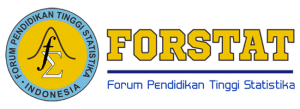Model Vector Autoregressive Exogenous dan Aplikasinya pada Curah Hujan Kota Makassar
(1) Jurusan Matematika FMIPA Universitas Negeri Makassar, 90224
(2) Jurusan Matematika FMIPA Universitas Negeri Makassar, 90224
(3) Jurusan Matematika FMIPA Universitas Negeri Makassar, 90224
(*) Corresponding Author
DOI: https://doi.org/10.35580/jmathcos.v2i2.13745
Abstract
Jenis penelitian ini adalah penelitian terapan yang bertujuan untuk meramalkan curah hujan di Kota Makassar dengan menggunakan model VARX. Model VARX dikembangkan dari model VAR dengan menambahkan faktor eksogen yang mempengaruhi curah hujan seperti Sea Surface Temperature (SST) Nino 3.4, Southern Oscillation Index (SOI), dan Dipole Mode Index (DMI). Data curah hujan yang digunakan pada penelitian ini adalah data curah hujan bulanan di Kota Makassar dari tahun 1987-2016 di tiga stasiun yaitu Panaikang, Paotere, dan Biring Romang sebagai faktor endogen. Data ini diperoleh dari Balai Besar Meteorologi, Klimatologi, dan Geofisika (BBMKG) Wilayah IV Makassar. Pembentukan model VARX melalui beberapa tahap yaitu: uji stasioneritas, penentuan panjang lag optimal, uji kausalitas, diagnostik model, pembentukan model VARX dan peramalan. Hasil penelitian menunjukkan bahwa rata-rata puncak curah hujan di Kota Makassar terjadi di bulan Maret kemudian turun secara eksponensial. Pada bulan Mei peluang terjadinya hujan sangat sedikit. Model yang didapat pada penelitian ini layak digunakan untuk meramalkan curah hujan pada periode berikutnya.
Kata Kunci: Model VARX, model VAR, curah hujan, peramalan.
This type of research is applied research that aims to predict rainfall in Makassar city VARX model using. The model was developed from the VARX model VAR by adding exogenous factors that influence the precipitation like Sea Surface Temperature (SST) Nino 3.4, the Southern Oscillation Index (SOI), and Dipole Mode Index (DMI). Rainfall data used in this researrchis the monthly rainfall data in Makassar city from 1987-2016 year on three stations, namely Panaikang, Paotere, and Biring Romang as endogenous factors. This data is retrieved from the Great Hall the Meteorology, Climatology, and Geophysics Region IV Makassar. VARX model formation through several stages, namely : test stasioneritas, the determination of the optimal lag length, test causality, diagnostic models, the establishment of the model of forecasting and VARX. The result showed that the average peak rainfall in Makassar city occurred in March and then come down exponentially. In May the chance of occurrence of very little rain.The model obtained in this study deserves to be used to predict rainfall in the next period.
Keywords: Model VARX, model VAR, rainfall, forecasting
Full Text:
PDFArticle Metrics
Abstract view : 397 times | PDF view : 69 timesRefbacks
- There are currently no refbacks.
Copyright (c) 2020 Journal of Mathematics, Computations, and Statistics
Indexed by:

This work is licensed under a Creative Commons Attribution-NonCommercial-ShareAlike 4.0 International License.











